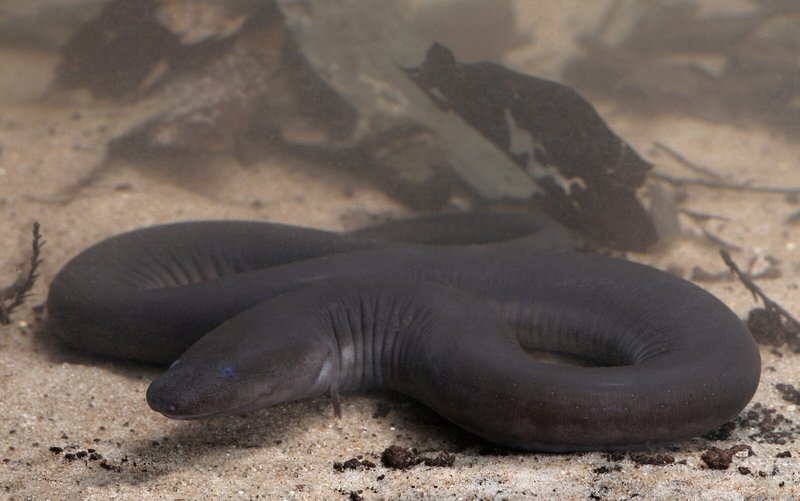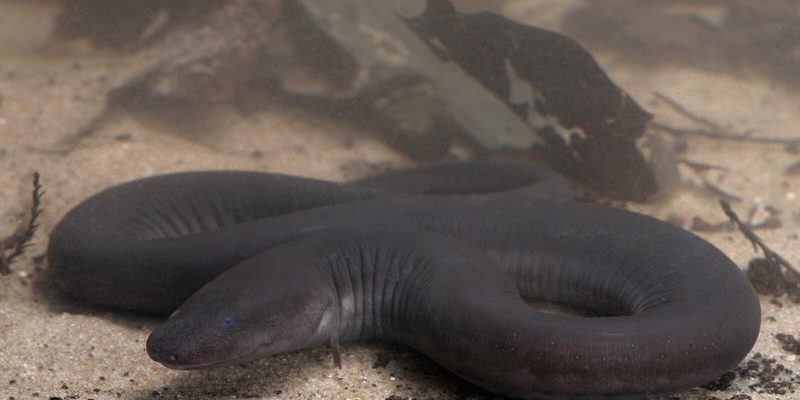
Have you ever heard of Amphiuma? If not, you’re in for a treat! These fascinating creatures are often overlooked, but they make up an intriguing part of our wetland ecosystems. Imagine a creature that looks like a giant eel but is more closely related to salamanders. That’s Amphiuma for you! They glide gracefully through muddy waters, showcasing an array of unique traits that make them special.
Amphiuma, commonly known as “congo eels” or “two-toed amphiumas,” can be found in the southern United States. They possess a remarkable ability to survive in various aquatic environments, and their adaptability is nothing short of impressive. So, whether you’re an avid wildlife enthusiast or simply curious about nature, let’s dive into the world of Amphiuma and unravel its secrets.
Physical Characteristics of Amphiuma
One striking feature of Amphiuma is its elongated body. They typically reach lengths of about 2 to 3 feet, though some can grow even longer. With their smooth, slimy skin and minimal limbs, they resemble eels, which adds to their allure. Most species possess one or two sets of tiny legs—perfect for navigating through the underwater world. These legs may seem underwhelming, but they actually play a crucial role in their movement.
Their skin is not just for show; it serves a purpose too. Amphiumas breathe through their skin as well as through rudimentary lungs, which is quite unique for amphibians. This means they must keep their skin moist at all times. It’s like they have to put on moisturizing lotion before every swim! Their coloration typically ranges from dark brown to black, allowing them to blend seamlessly with their muddy surroundings.
Size and Lifespan
As mentioned earlier, Amphiumas can grow quite large, with some species reaching impressive lengths of up to 4 feet. A typical adult Amphiuma can weigh anywhere between 1 to 5 pounds, depending on the species and its habitat. Their size can be intimidating to some, but they are generally shy and prefer to stay hidden beneath the murky waters.
In terms of lifespan, Amphiumas can live around 15 to 20 years in the wild, although their longevity can be influenced by environmental factors and predation. This long lifespan is a testament to their adaptability and resilience, allowing them to thrive in varying conditions over the years.
Habitat and Distribution
Amphiumas are truly creatures of the wetlands. You’ll typically find them in slow-moving waters, swamps, marshes, and even ditches. They prefer environments with plenty of vegetation where they can hide from predators and hunt for food. Their habitat choice reflects their need for moist conditions, as they must keep their skin damp to breathe properly.
Geographically, Amphiumas are mainly distributed in the southeastern United States, particularly in states like Louisiana, Florida, and Mississippi. They thrive in the nutrient-rich waters of these regions, which provide ample food resources. The combination of warm temperatures and abundant freshwater makes this area a perfect home for them.
Diet and Feeding Habits
When it comes to food, Amphiumas are carnivores with a particular fondness for a variety of prey. Their diet mainly consists of small fish, insects, crustaceans, and even other amphibians. They are opportunistic hunters, often using their keen sense of smell to locate food hiding in the muddy substrate.
Amphiumas have a fascinating feeding technique; they employ their long, slender bodies to ambush prey. They can remain motionless for long periods, waiting for the perfect moment to strike. When they do, their strong jaws come into play, helping them capture and swallow their meal whole. It’s like watching a slow-motion action movie, with Amphiumas being the stealthy hunters!
Reproduction and Life Cycle
Amphiumas reproduce during the warmer months, typically from late spring to early summer. Their mating rituals can be quite interesting, as males will often engage in a dance to attract females. After courtship, the female lays her eggs in hidden, submerged areas to protect them from predators.
These eggs are gelatinous and can number anywhere between 50 to 200. Once laid, the eggs hatch in about two months. The young Amphiumas, known as larvae, start off with gills for breathing underwater. As they mature, they gradually develop lungs, transitioning to a more adult-like form.
Behavior and Adaptations
Amphiumas are primarily nocturnal, which means they’re most active at night. This behavior helps them avoid predators and makes them more efficient hunters. During the day, they prefer to stay hidden under logs, rocks, or within the mud. Their ability to burrow into the substrate is a handy adaptation for avoiding harsh environmental conditions.
One of the most fascinating adaptations of Amphiuma is their ability to survive in low-oxygen environments. They can tolerate hypoxic conditions due to their unique respiratory system. This allows them to thrive in waters that might be inhospitable to other species, making them a key player in their ecosystem.
Conservation Status
While Amphiumas are not currently considered endangered, they face threats from habitat destruction, pollution, and climate change. Wetland areas are often drained for development or agriculture, which can lead to a decline in their populations. Conservation efforts are crucial to preserve their habitats and ensure these unique creatures continue to thrive.
Various organizations are working to protect wetland ecosystems, emphasizing the importance of biodiversity. By raising awareness about the needs of Amphiumas and their ecological role, we can take steps to safeguard their future. It’s a collective responsibility to ensure these magnificent amphibians have a secure home.
Interesting Facts About Amphiuma
| Fact | Details |
|---|---|
| Species | There are three main species: Amphiuma tridactylum (three-toed), Amphiuma means (two-toed), and Amphiuma pholeter (one-toed). |
| Habitat | Primarily found in swamps, marshes, and slow-moving waters. |
| Diet | Carnivorous; feeds on small fish, insects, and crustaceans. |
| Reproduction | Eggs are laid in water and can hatch in about two months. |
| Unique trait | Amphiumas can breathe through their skin as well as lungs. |
Amphiuma may not be the most well-known creature in the animal kingdom, but they are certainly fascinating. With their unique adaptations, intriguing behaviors, and vital role in wetland ecosystems, these creatures deserve our attention and respect. By learning about Amphiumas, we can appreciate the beauty of biodiversity and the importance of protecting our natural environments.
FAQ
What is Amphiuma’s primary habitat?
Amphiuma primarily inhabits wetlands such as swamps, marshes, and slow-moving water bodies. They thrive in environments with rich vegetation, which provides ample hiding spots and food sources.
How do Amphiumas breathe?
Amphiumas breathe both through their skin and their rudimentary lungs. This dual respiratory system allows them to survive in low-oxygen environments, making them quite unique among amphibians.
Are Amphiumas dangerous to humans?
No, Amphiumas are generally harmless to humans. They are shy creatures that prefer to avoid confrontation. If threatened, they may bite, but such instances are rare. They pose no significant threat to humans or pets.
What do Amphiumas eat?
Amphiumas are carnivorous and feed on a variety of small animals, including fish, insects, and crustaceans. They are opportunistic predators, using their keen sense of smell to locate food in murky waters.
How long do Amphiumas live?
In the wild, Amphiumas can live between 15 to 20 years, depending on environmental factors and predation risks. Their longevity highlights their adaptability in various habitats.
How do Amphiumas reproduce?
Reproduction occurs during warmer months, with females laying eggs in hidden, submerged areas. The eggs hatch after about two months, producing larvae that initially breathe through gills.
What threats do Amphiumas face?
Amphiumas face threats from habitat loss due to urban development, pollution, and climate change. Conservation efforts are essential to protect their habitats and maintain their populations.
Can Amphiumas survive out of water?
While Amphiumas are primarily aquatic, they can survive out of water for short periods as long as their skin remains moist. However, prolonged exposure to dry conditions can be harmful to them.
What do baby Amphiumas look like?
Baby Amphiumas, or larvae, start off with gills, which they use for underwater breathing. As they grow and mature, they develop lungs and adapt to their semi-aquatic lifestyle.
Are Amphiumas solitary or social creatures?
Amphiumas are generally solitary animals. They prefer to hunt and live alone, coming together only during the breeding season. Their solitary nature helps them avoid competition and predation.
How do Amphiumas contribute to their ecosystem?
Amphiumas play a vital role in their ecosystem as both predators and prey. They help control populations of smaller animals in their habitat while also serving as a food source for larger predators.
How can we help protect Amphiumas?
We can help protect Amphiumas by supporting wetland conservation efforts, advocating for legislation that protects wetland habitats, and educating others about the importance of biodiversity in our ecosystems.
Do Amphiumas have any natural predators?
Yes, Amphiumas face predation from various animals, including larger fish, birds, and mammals. Their ability to burrow and remain hidden helps them evade many threats in their environment.

